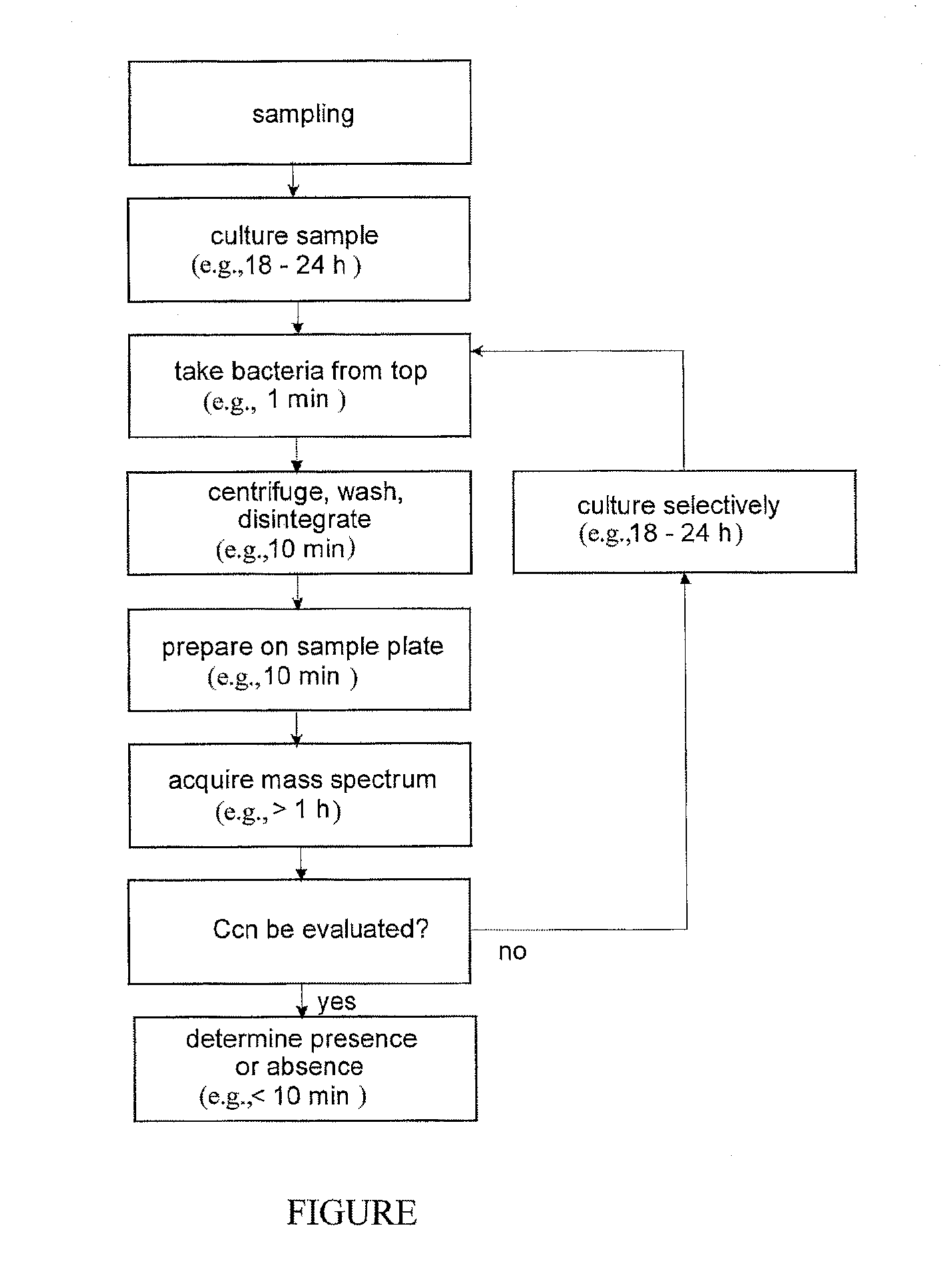Mass spectrometric rapid detection of salmonella
a mass spectrometry and rapid detection technology, applied in the field of mass spectrometry, can solve the problems of typhoidal or paratyphoidal bowel infections, severe, slow or expensive known methods, etc., and achieve the effect of reducing the time required for the standard method and reducing the risk of infection
- Summary
- Abstract
- Description
- Claims
- Application Information
AI Technical Summary
Benefits of technology
Problems solved by technology
Method used
Image
Examples
Embodiment Construction
[0026]A single culturing period of about 12 to 24 hours in a liquid nutrient medium (a “broth”) is combined with a position-selective sampling of flagellated microbes from the culture, after which a mass spectrometric detection method is used to recognize the pathogenic target bacteria in mixtures. A second culture step is generally only necessary in exceptional cases. A species-selective or genus-selective culture is advantageous. Positional selection becomes possible because these bacteria use their flagella to counteract sedimentation by chemotaxis, therefore, at least in the period of the last hours, the culturing should be performed without agitation.
[0027]A detection method is depicted in the FIGURE.
[0028]The invention can be used for all types of flagellated bacteria; however the description shall discuss the method in the context of detecting Salmonella. Two examples of the detection method for Salmonella are specified below; they relate specifically to stool and to food sam...
PUM
 Login to View More
Login to View More Abstract
Description
Claims
Application Information
 Login to View More
Login to View More - R&D
- Intellectual Property
- Life Sciences
- Materials
- Tech Scout
- Unparalleled Data Quality
- Higher Quality Content
- 60% Fewer Hallucinations
Browse by: Latest US Patents, China's latest patents, Technical Efficacy Thesaurus, Application Domain, Technology Topic, Popular Technical Reports.
© 2025 PatSnap. All rights reserved.Legal|Privacy policy|Modern Slavery Act Transparency Statement|Sitemap|About US| Contact US: help@patsnap.com

